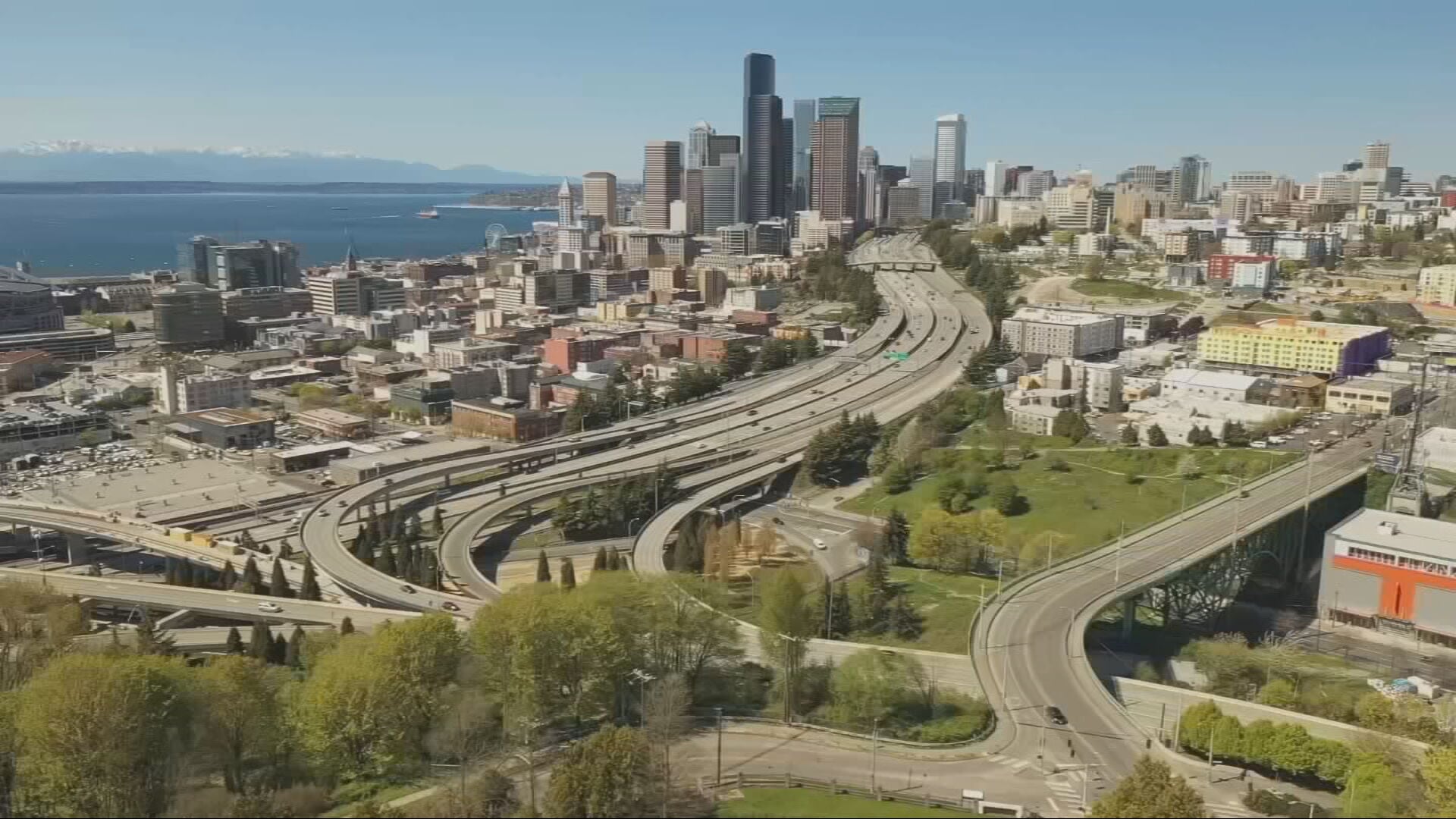This story was originally published on MyNorthwest.com
In an effort to give cities a new tool to make streets safer and more pedestrian-friendly, the state Senate passed a bill granting local lawmakers the ability to lower speed limits on designated “shared streets” to just 10 miles per hour. The bill’s sponsor, Senator Emily Alvarado (D-Seattle), described it as a way to help cities design streets where “pedestrians, bicyclists, and vehicular traffic all share the same street.”
Senate Bill 5595 passed Tuesday on a bipartisan 42-4 vote, sending the bill over to the House.
Alvarado said it is intended to establish shared streets in places like Pike Place Market and Pioneer Square. She emphasized that the key feature of this legislation is granting local jurisdictions the ability to reduce speed limits, explaining, “The local jurisdiction doesn’t have the ability yet to bring the speed limit down to 10 miles per hour, and so this tool just allows them to bring in that kind of safety feature that will help make everyone work together.”
Supporters argue that the change will make streets safer and more inviting for pedestrians and businesses.
Related MyNorthwest: Bill to open bus only lanes to employer shuttles sparks debate in Olympia
Supporters want to reduce speed limits
During a public hearing in front of the Senate Transportation Committee on February 10, Carl Schroeder of the Association of Washington Cities backed the bill, stating, “The biggest thing, from my perspective, is that authority to limit the speed limit to 10 miles an hour, in recognition that that’s probably a safer limit in these areas.”
He also pointed out that many communities already have de facto shared streets but currently lack the legal framework to regulate them effectively.
Seattle’s Chief Transportation Safety Officer, Venu Nemani, also testified in favor, noting that the bill aligns with existing urban design trends.
“Presently, our state laws preclude designing, designating, or implementing streets where people and traffic can co-mingle in the same street space,” he said. “This bill, if passed, will provide a legal pathway for local jurisdictions to design and implement shared streets on local, non-arterial roadways.”
Related MyNorthwest: Washington lawmakers reignite gun permit fight after failing last year
Critics say implementation needs enforcement mechanisms
However, concerns remain about the bill’s implementation. Critics worry that without clear enforcement mechanisms, the new speed limits may not have the intended impact.
Senator Curtis King (R-Yakima) questioned how the bill would be enforced, asking, “I mean, you know, what is the mechanism? I guess, if someone was not going 10 miles an hour, or the streets weren’t being shared?”
Alvarado acknowledged the concern, stating that while the bill allows for signage and speed limit reductions, enforcement details would be left to local authorities.
A committee staff member responded to King’s question about who had the right of way, acknowledging that pedestrians have the first right of way, followed by bicyclists and then vehicles.
“That’s a disaster waiting to happen,” King said.
The trucking industry voiced hesitation, fearing complications for commercial deliveries in these shared zones. Jeff DeVere, representing the Washington Trucking Associations, acknowledged the bill’s good intentions but worried about the practical impact.
“You have UPS and FedEx, and they’re delivering things,” he said. “So we wanted to voice some concern that, you know, the authorization is good, but I think that there should be some sideboards to make sure that everybody knows the rules.”
Shared streets has safety risks
Others raised concerns about mixing pedestrians and vehicles in areas where safety risks might be higher. Morgan Irwin of the Association of Washington Business pointed out the potential dangers, citing traffic safety data.
“It takes about a second and a half for a person to recognize that something is happening. At 10 miles an hour, that means you’ve traveled about 21 feet,” he explained, emphasizing the importance of designing these shared streets carefully to minimize risks.
Despite the concerns, the bill has gained traction as part of a broader effort to make Washington’s streets more pedestrian-friendly. Mark Ostrow, a supporter of the legislation, argued that shared streets are already common in other countries and that this bill simply gives local authorities the ability to formalize them.
“It’s remarkable that in 2025, local authorities in Washington still lack the ability to create these kinds of streets that exist everywhere in the world,” he said.
A companion bill in the House failed to make any progress. The Senate version now goes to the House for consideration.
©2025 Cox Media Group








